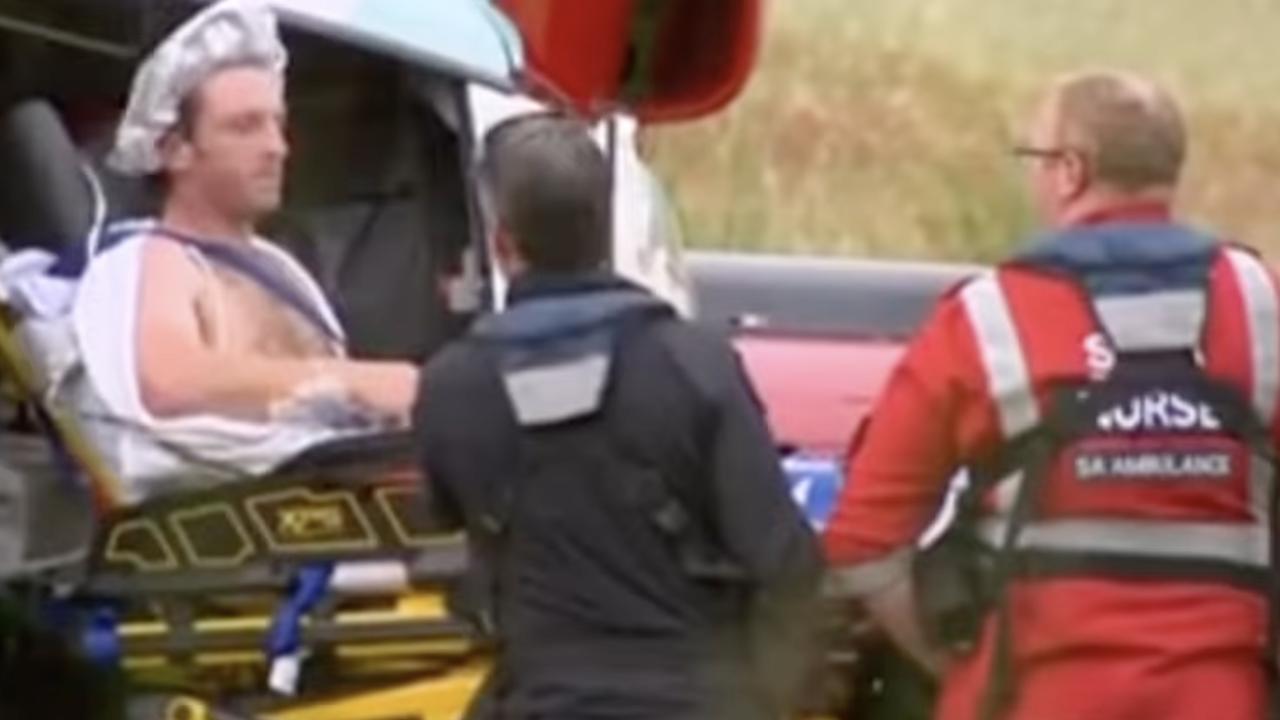MH370 search: Plane debris in Australia being analysed
INVESTIGATORS in Australia are examining a wing flap found on an East African island that is suspected to be from the missing Malaysian airliner.

INVESTIGATORS in Australia are examining a wing flap found last month on an East African island that is suspected to be from the missing Malaysian airliner, officials said.
The “large piece of aircraft debris” arrived at the Australian Transport Safety Bureau headquarters in the capital, Canberra, for examination as part of the search for Malaysia Airlines Flight 370, said a joint statement by Australian and Malaysian government authorities.
“The large piece of what is likely to be a wing flap” was found June 23 by locals on Pemba Island, off the coast of Tanzania, the statement said.
Australian technical specialists were working with Malaysian investigators to determine whether the debris was from the Boeing 777 that vanished with 239 people on board after flying far off course during a flight from Kuala Lumpur, Malaysia, to Beijing on March 8, 2014.
The Transport Safety Bureau has so far examined four pieces of debris and found that they were almost certainly from Flight 370, which is thought to have crashed in the Indian Ocean southwest of Australia.

Another piece of wing found a year ago on La Reunion Island, off the African coast, was positively identified by French officials. The bureau is overseeing a sonar search of 120,000 square kilometers (46,000 square miles) of seabed in the hunt for Flight 370’s crash site.
Australian Transport Minister Darren Chester said fewer than 10,000 square kilometers (3,900 square miles) had yet to be searched. The underwater search has not yielded a single clue so far.

Meanwhile, the Australian government will likely be asked to continue managing the search for MH370 but only if Malaysia and China agree to fund ongoing efforts, an aviation expert says.
But the Canberra-based Joint Agency Coordination Centre has repeatedly said there will be no further expansion of the search — already the longest and most expensive in aviation history — without credible new information.
Transport Minister Darren Chester is attending a two-day meeting with his counterparts in Kuala Lumpur to determine the future of the search in the southern Indian Ocean, with less than 10,000sq km remaining to be combed.
Aviation expert Neil Hansford, who believes the Boeing 777 crashed as a result of a deliberate act by the pilot, says Australia has not allocated any more cash for the search in the latest budget.
“It’s all down to money,” Mr Hansford told AAP.

“Either Australia is in handover mode at the moment or someone is going to pay us to do the job.” Mr Hansford said Australia may be asked to keep co-ordinating the search and analysing sea floor scans — but can’t afford to keep funding the vessels.
Agreeing to that would be good diplomacy, he said.
“There is a good political case for our Sino relationship that Australia continues to do the administration of the search while the Malaysians and Chinese are prepared to pay for the oceanography,” Mr Hansford said.
“That’s all reasonable — the area concerned is part of our international responsibility.” Mr Hansford said Australia had already provided a disproportionate amount of funding along with the expertise of the Australian Transport Safety Bureau and also the University of Western Australia, which had correctly modelled where debris would drift.

Several pieces of the aircraft have been found on Africa’s east coast, confirming it crashed in the Indian Ocean and supporting a flight path projection based on satellite data.
“Everything that could be done was done,” Mr Hansford said.
The chances of being able to recover information from cockpit voice and flight data recorders, however, had diminished with time, he said.
“This is not a rescue, this is not a recovery. This is all political face-saving,” Mr Hansford said.
A network of families of passengers dubbed Voice370 says relatives are growing distressed by the prospect the search may be called off, insisting it must go on.
Two-thirds of the passengers were Chinese citizens and seven people were from Australia, including New Zealander Paul Weeks, whose Perth-based wife Danica is suing the airline for damages.



